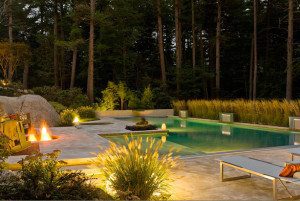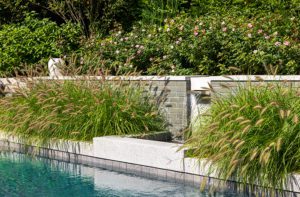Carol Wilson
May 10, 2011
Photography by Matt Kalinowski
Fresh from the successes of organizing 2010’s inaugural Maine Prize for Architecture and the Storefront for Architecture exhibition, Maine Modern: 50 Years of Modern Architecture in Maine, architect Carol Wilson has moved on to a new challenge equally close to her heart: curating a new show this summer at the Haystack Mountain School of Crafts. Haystack’s Architecture: Vision and Legacy will feature work by architects influenced by Edward Larrabee Barnes, who in 1961 created the school’s award-winning campus, now widely considered an American classic. New England Home’s Kyle Hoepner talked with her as she was firming up plans for the show.
Kyle Hoepner: So Carol, what is this exhibition?
Carol Wilson: The exhibition is about work that was influenced by Edward Larrabee Barnes and Haystack, that was influenced by the architecture of the school. The participants are either people who worked with Barnes or were influenced directly by him.
KH: And you were asked to curate this because of your own connections with Haystack?
CW: No, not really. Well, in a way. I did teach there and I’ve done a couple of conferences and a lecture at Haystack. But Haystack was included in the show Maine Modern: 50 Years of Modern Architecture in Maine. So Stuart [Stuart Kestenbaum, director of the Haystack Mountain School] came to see it. I think a light bulb went off for him, seeing that there were other works in Maine that had been influenced by Haystack. He started thinking it would be a great way to celebrate their fiftieth anniversary, to really celebrate the architecture. I thought it was a great idea because I know a lot of these buildings, because I’ve been so aware of Haystack. I mean it really is architectural and cultural history in Maine.
KH: So you just took it from there?
CW: I set out doing some research. In the back of the Rizzoli monograph on his work there’s a list of all the people who had worked in Barnes’s office. I ticked off the handful of people I knew, and I started writing letters, calling people in New York, California, Canada, and looking at their buildings. The Barnes archives are at the Graduate School of Design at Harvard, so I was able to go through those online. In the end we will probably have about twelve to sixteen architects and maybe twenty projects. There is a space limitation—the gallery in Deer Isle Village is not very big. But so far the works that we’ve selected are just great.
The thing that excites me the most is looking at them in reference to Haystack, how it enlarges your vision of what’s already there. Because when you see Haystack it has such a presence it almost feels finite. Then all of a sudden you start to see iterations of it in other landscapes. Sometimes maybe the only thing that has been translated isn’t so much the architecture, but the principle. But Haystack—there’s something about it. You go to the site and there are all those barky trees, and then he’s got those rugged shingles that look like bark on the buildings. And when you step on the boardwalk you feel respectfully suspended above the landscape, you know that there is a sensitivity to it.
KH: What are the dates for the show?
CW: It opens on July 3 and will run through October 17. We’re having it up for a long time so that all the summer people can see it, and board members of Haystack, and maybe some of the architects can even come.
And again, similar to the Storefront for Architecture project, we’re asking that the architects submit models, because I feel strongly that we’re talking about a three-dimensional art form here. We have a model of Haystack, which is interesting. We didn’t have one for the Storefront show—the Museum of Modern Art in New York owns the model, and they were the one museum that wouldn’t lend to us. Then Stu called me one day and said, “Oh, we were doing our ten-year cleanup and guess what we found? A replica of the model. I always knew there were two of them.”
The architects are also being asked to write a commentary on how they were influenced by Barnes, and all of these people have these wonderful stories about how they met Ed, how he affected them.
KH: You yourself had a long history with Mr. Barnes, didn’t you?
CW: I first met Edward Barnes in 1976. I was in architecture school and I worked for the campus architect at North Carolina State University. Ed was hired to design a building on campus. He would come and present the work and the first thing I was impressed by was what a wonderful person he was. Just very genteel and sincere, and he loved what he was doing. I got to work with him on that building.
It was an infill building between two existing campus buildings on a famous courtyard called the Court of North Carolina, so it was a beautiful site on the old end of campus. One of the things he wanted to do was to match the brick coursing on Tompkins Hall and Winston Hall, the two adjoining buildings. So he asked me to give him brick coursing. I went out with my surveyor’s rod and an assistant with a camera, and using my finger as a pointing stick went up the surveyor’s rod giving him every four courses or something like that. And he felt that was so clever, he said later, that he pinned that photograph over his desk in his office.
Then, in 1994, I happened to be president of AIA Maine, the Maine chapter of the American Institute of Architects, and Haystack won the Twenty-Five Year Award. I was invited to the award ceremony. That was really fun because here it was about twenty years later, and we rekindled our discussion about Caldwell Hall at North Carolina State.
The one other time I met him was a year before he died. I was teaching the master’s studio at the University of New Mexico, and I brought the students to Maine. Their project, their master’s thesis, was to design a building to go on the Haystack campus.
KH: Oh, interesting.
CW: It was interesting, because the school said “we want you to come teach this studio.” And they talked a lot about teaching very place-based architecture, very focused on regionalism, on climate, geography, topography, flora, fauna—the whole deal. And I said, “I know nothing about the desert. But if your program is really teaching what you’re telling me, which is principles of design, versus style, the great test of your program would be to see if students could make the transition to a very different place.”
So they came to Maine. We saw some of my work in southern Maine; then we went to Haystack and Stu Kestenbaum arranged it so we could be there for four days. We lived at Haystack and the highlight of the studio was that Ed and Mary Barnes came. That was the last time he visited Haystack and he sat with this group of students around the fireplace in the dining hall and we all asked him questions. I’m not sure the students realized they were in the presence of someone who had done something so significant. But I know that for me and Stuart and Lissa Hunter, who was the president of the board at the time, we just couldn’t get enough.
Editor’s note: Haystack’s Architecture: Vision and Legacy will be open Thursdays–Sundays from 1–5 p.m., July 3 through September 4. From September 4 through October 15 it will be open by appointment. Haystack Mountain School of Crafts Center for Community Programs, 22 Church St., Deer Isle, Maine. Carol Wilson will give a gallery talk on July 24 at 3 p.m. For more information, visit www.haystack-mtn.org. For further information about the Storefront for Architecture and the Maine Prize for Architecture, visit www.storefrontforarchitecture.org.
Share
![NEH-Logo_Black[1] NEH-Logo_Black[1]](https://b2915716.smushcdn.com/2915716/wp-content/uploads/2022/08/NEH-Logo_Black1-300x162.jpg?lossy=1&strip=1&webp=1)






